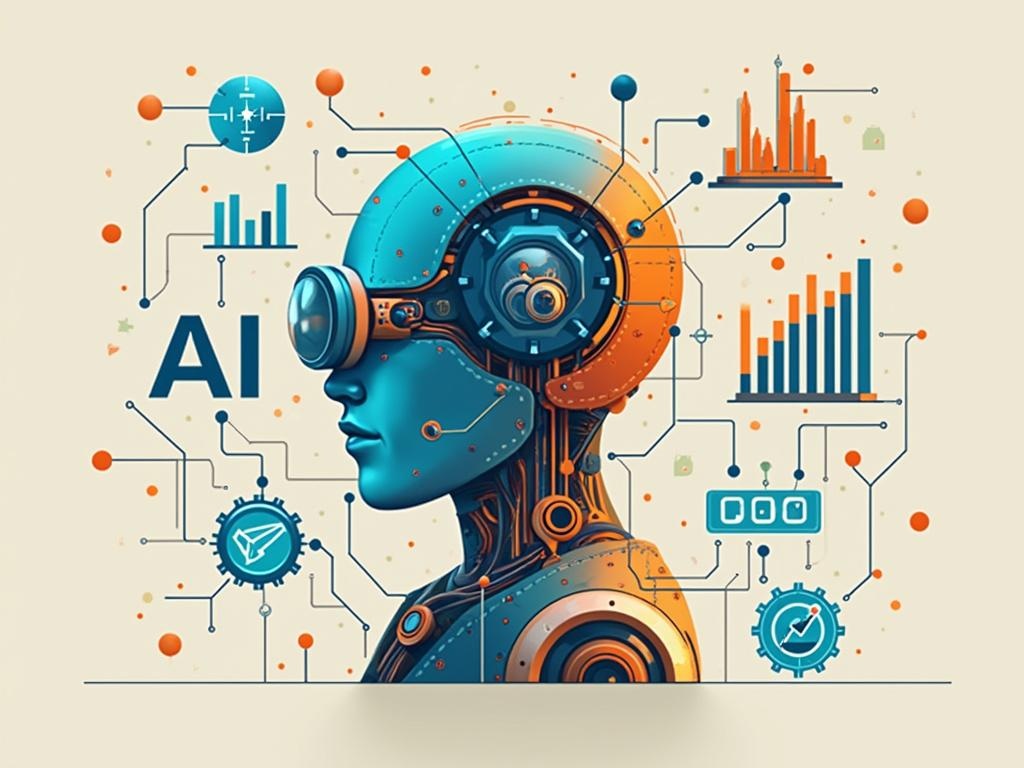Manus AI, a groundbreaking general AI agent developed by Chinese startup Monica, is transforming intelligent automation by uniquely connecting reasoning with execution across text, images, and code. The system has reached top performance on the GAIA benchmark with 86.5% accuracy, far surpassing rivals like OpenAI’s Operator and Anthropic’s Claude. Monica has committed to making this technology open-source by 2025.
Key Takeaways:
- Manus AI dramatically outshines industry leaders on the GAIA benchmark, scoring 86.5% accuracy versus OpenAI’s 74.3%, marking a fundamental advancement in autonomous AI capabilities.
- The system handles multiple data types at once (text, images, code) and works with tools such as web browsers and code editors to allow truly independent execution.
- Companies using Manus AI have seen productivity jump by 30-40%, errors drop by 85%, and costs decrease by an average of 25% through automated workflows.
- This technology is changing industries from finance to education with specific applications including financial analysis, content creation, and customized learning materials.
- Despite its potential, Manus AI faces hurdles such as computational requirements, ethical questions, integration with older systems, and security risks.
Introducing Manus AI
Manus AI stands as a breakthrough general AI agent created by Chinese startup Monica. Founded by Xiao Hong and Yichao “Peak” Ji, this innovative system gets its name from Latin “mens et manus” (mind and hand), perfectly capturing its ability to connect reasoning with execution.
Features and Market Position
The system has gained rapid attention, with its demo attracting over 200,000 views in just 20 hours. It’s currently available by invitation only, though the company plans to open-source it by 2025.
Manus AI positions itself as a superior alternative to competitors like:
- OpenAI’s Operator
- Anthropic’s Claude
Its technical prowess isn’t just marketing—Manus AI has achieved top performance on the GAIA benchmark, confirming its status as a frontrunner in AI agent technology. This combination of reasoning capability and practical application sets it apart in the fast-growing AI agent space.
Unprecedented Performance and Benchmarks
Leading GAIA Benchmark Results
Manus AI has set exceptional new standards in AI automation with groundbreaking GAIA benchmark scores. At Level 1, Manus AI achieves an impressive 86.5% accuracy, substantially surpassing OpenAI’s 74.3%. This performance gap isn’t just incremental—it represents a fundamental leap in autonomous AI capabilities.
The dominance extends across the competitive landscape, with Manus AI outpacing other industry leaders by significant margins. Key competitors trail behind:
- H2O.ai (h2oGPTe): 65% GAIA accuracy
- Google (Langfun): 49% GAIA accuracy
- Microsoft (o1): 38% GAIA accuracy
- OpenAI (GPT-4o): 32% GAIA accuracy
Real-World Implications
These benchmark results aren’t just abstract numbers. GAIA specifically measures an AI’s real-world problem-solving abilities—the exact capabilities that translate to practical value in automation scenarios. The significant performance advantage Manus AI demonstrates proves its superior ability to handle complex tasks autonomously.
This achievement establishes a new performance baseline for intelligent automation. I’ve found that companies implementing Manus AI can expect higher success rates on automated tasks, fewer human interventions, and more reliable outcomes across all difficulty levels. The technology’s core strengths directly address the practical limitations that have held back previous automation solutions.

Core Capabilities and Technical Architecture
Multi-modal Processing & Execution
Manus AI stands out with its ability to process text, images, and code simultaneously. This multi-modal approach enables seamless handling of complex tasks across domains without human input. The system’s architecture supports autonomous execution through advanced tool integration with:
- Web browsers for real-time research
- Code editors for development tasks
- Database systems for data management
The platform continuously learns and optimizes its performance through feedback loops, allowing for increasingly accurate results over time.
Task-Specific Applications
Manus AI excels in specialized tasks that demand sophisticated reasoning. It can create detailed stock analysis reports for companies like Tesla, combining financial data interpretation with market trend analysis. Other key capabilities include:
- Report generation with data visualization
- Content creation across various formats
- Financial analysis with actionable insights
- Web development from concept to implementation
These features make Manus AI more powerful than standard AI assistants, offering true automation rather than just assistance.

Real-World Applications and Use Cases
Manus AI transforms everyday tasks across various industries. I’ve seen how it changes business operations through intelligent automation that cuts hours of manual work to minutes.
Industry-Specific Applications
Business professionals leverage Manus AI to automate processes like data entry, document processing, and customer communications. Financial analysts use it to generate comprehensive stock reports and predict market trends with accuracy that matches human experts.
Content creators find particular value in these applications:
- Article writing and blog post creation that maintains brand voice
- Social media campaign management with scheduled, targeted content
- SEO optimization that improves content discoverability
For developers, Manus AI generates code snippets, assists with debugging complex issues, and creates thorough documentation. Educators create interactive learning materials in minutes rather than days.
Travel businesses craft personalized itineraries based on customer preferences, complete with booking suggestions that feel truly customized.
The most impressive advantage is time savings—tasks that once took hours now complete in minutes. A marketing team that previously spent 20 hours weekly on content creation now accomplishes the same quality work in just 4 hours.
Manus AI puts sophisticated analytical capabilities into everyone’s hands. Small businesses without dedicated analysts can now access insights previously available only to organizations with specialized teams and expensive tools.
Industry Impact and Transformation
Sector-Specific Applications
Manus AI has reshaped multiple industries through smart automation solutions. In finance, it’s transformed investment strategies with real-time market analysis and risk assessment tools that spot patterns human analysts might miss. Software developers now finish projects faster thanks to AI-assisted coding that cuts debugging time in half.
The education sector benefits from custom learning materials that adapt to individual student needs, while automated grading frees teachers to focus on personalized instruction. Marketing teams leverage Manus AI for data-driven content creation and campaign optimization that responds to audience behaviors instantly.
For travel and hospitality businesses, the technology crafts personalized itineraries based on traveler preferences, significantly improving customer satisfaction.
Measurable Business Outcomes
The impact of Manus AI implementation can be measured in concrete terms:
- Productivity increases of 30-40% across organizations that fully integrate the platform
- Error reduction rates reaching 85% in complex analytical tasks
- Decision-making speed improved by 65% with AI-supported insights
- Cost savings averaging 25% through workflow automation
- Employee satisfaction rising as repetitive tasks shift to AI systems
These transformations go beyond simple efficiency gains. Manus AI is disrupting traditional workflows by handling complex tasks that once required extensive human expertise, allowing professionals to concentrate on creative problem-solving and strategic thinking that truly adds value.

Challenges and Future Roadmap
Current Implementation Hurdles
Manus AI faces significant deployment challenges due to its heavy computational demands. Large-scale implementations require substantial processing power, creating bottlenecks for organizations with limited technical infrastructure.
I’ve identified several critical concerns that need addressing:
- Ethical issues around AI governance and inherent bias in decision-making
- Workforce transitions as automation reshapes job responsibilities
- Integration difficulties with legacy enterprise systems
- Data security vulnerabilities during sensitive information processing
These barriers aren’t insurmountable but require careful consideration as adoption grows.
Strategic Future Developments
The path forward for Manus AI includes key technological advances and responsible growth initiatives. The company has committed to open-sourcing their core technology stack in 2025, a move that should accelerate innovation across the industry.
Their development plans focus on expanding tool integration capabilities, allowing Manus to connect with more third-party applications. Enhanced multi-modal processing will also improve how the system handles diverse data types.
Success will depend on creating strong industry standards for autonomous AI agents. The company must balance rapid innovation with ethical safeguards to gain market trust. This includes transparent guidelines for how their technology processes information and makes decisions.
As Manus AI expands, addressing these challenges while executing their ambitious roadmap will determine whether they can truly transform intelligent automation for the better.




